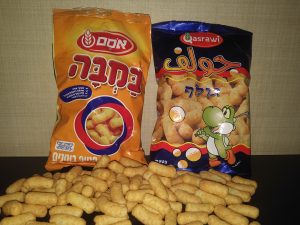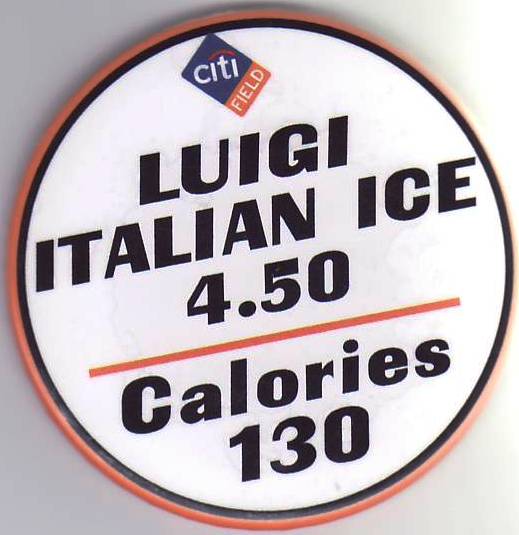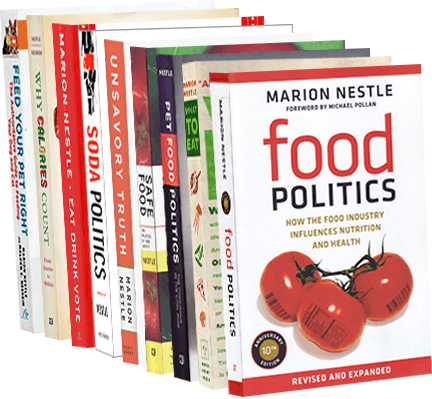While in Israel, I kept hearing that peanut allergies are virtually unknown in that country. Nobody I met knows anyone with problems with peanuts—not Jews, Arabs, children, nor adults.
The explanation?
Bamba (and its Arabic equivalent).

These things are peanut puffs.
Because they melt in the mouth, they are often fed to babies as a first food. Apparently, babies love them.
How do they taste? Just as you might expect (peanut-flavored straw? peanut-flavored Cheetos?). They are sold everywhere as a snack and I met adults who love them too.
Do they really prevent peanut allergies? Indeed, there might be something to this idea.
Introduction of peanut products into the diets of infants at high risk of developing peanut allergy was safe and led to an 81 percent reduction in the subsequent development of the allergy, a clinical trial has found…Researchers led by Gideon Lack, M.D., of King’s College London, designed a study called Learning Early About Peanut Allergy (LEAP), based on observations that Israeli children have lower rates of peanut allergy compared to Jewish children of similar ancestry residing in the United Kingdom. Unlike children in the UK, Israeli children begin consuming peanut-containing foods early in life.
Translation: Bamba.
These researchers also found that allergic reactions did not return even if the children in that trial stopped eating Bamba for a year.
Their studies were funded mainly by NIH and the UK Department of Health, but the researchers also report that their clinical trials unit was supported by the National Peanut Board, Atlanta, and that the manufacturer of Bamba supplied the products. The lead author, Gideon Lack, reports holding stock in DBV Technologies, the maker of Viaskin Peanut, a product that helps people with peanut allergies tolerate exposure to peanuts.
I’d like to see these studies repeated by fully independent researchers.
In the meantime, pediatric allergists are advising parents to let their babies eat peanut butter (but not peanuts because babies can choke on them).
These allergists—and the authors of the Bamba studies—participated in an American Academy of Pediatrics consensus statement:
There is now scientific evidence (Level 1 evidence from a randomized controlled trial) that health care providers should recommend introducing peanut-containing products into the diets of ‘‘high-risk’’ infants early on in life (between 4 and 11 months of age) in countries where peanut allergy is prevalent because delaying the introduction of peanut can be associated with an increased risk of peanut allergy.
If these studies are right, introducing babies to the widest possible variety of foods as soon as they can handle solid foods (usually at 4 to 5 months) may well help prevent allergies later on.
Addition
A reader just sent another paper from the same authors, this one a randomized trial of six allergenic foods given to breastfed babies at 3 or 6 months of age. By one analysis, allergies developed 1 to 3 years later in 7.1% of the later-introduction group and 5.6% of the earlier-introduction group—a result that was not statistically significant. By another, allergies were much lower in the early-introduction group (2.4% vs 7.3%), especially with respect to peanut and milk allergies.







